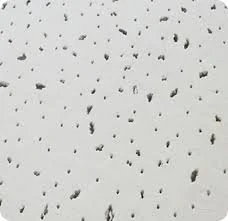Dec . 13, 2024 15:43 Back to list
cross tee ceiling
Exploring Cross Tee Ceilings Structure and Aesthetics
In contemporary architecture and interior design, the cross tee ceiling has become an increasingly popular feature. This design element offers both functional and aesthetic benefits, making it a preferred choice for a variety of spaces, from commercial offices to residential homes. Understanding the characteristics and advantages of cross tee ceilings can provide valuable insight for homeowners, designers, and builders alike.
What Are Cross Tee Ceilings?
Cross tee ceilings are a type of suspended ceiling system that uses a grid layout of metal or other lightweight materials. The grid consists of main tees that run parallel to each other, with cross tees connecting them at regular intervals. This creates a grid-like pattern across the ceiling, allowing for the installation of ceiling tiles, panels, or other materials. The structure not only conceals ductwork, wiring, and other mechanical systems but also provides a versatile surface that can be customized according to design preferences.
Benefits of Cross Tee Ceilings
1. Aesthetic Appeal One of the main attractions of cross tee ceilings is their visual impact. They offer clean lines and a structured look that can enhance the overall design of a space. Additionally, by selecting from a variety of ceiling tiles and finishes, designers can create unique aesthetics, whether aiming for a modern industrial feel or a more traditional ambiance.
2. Acoustic Control Cross tee ceilings can significantly improve the acoustic quality of a room. With the correct choice of acoustic tiles, these ceilings help absorb sound, reducing noise levels and enhancing privacy. This is especially beneficial in environments like offices, schools, and healthcare facilities, where sound management is crucial.
cross tee ceiling

3. Accessibility The suspended nature of cross tee ceilings allows for easy access to electrical and mechanical systems. If maintenance is needed, tiles can be easily removed and replaced without significant disruption, making these ceilings practical for long-term building management.
4. Lightweight and Cost-Effective Made from materials like gypsum or metal, cross tee ceilings are relatively lightweight compared to traditional plaster ceilings. This characteristic can result in lower construction costs and less strain on the building’s structural framework.
5. Energy Efficiency Depending on the materials used, cross tee ceilings can contribute to energy efficiency. Insulated ceiling tiles can help maintain temperature, thus potentially lowering heating and cooling costs. Integrating energy-efficient lighting designs within the ceiling grid can further enhance energy savings.
Applications of Cross Tee Ceilings
The versatility of cross tee ceilings means they can be utilized in various applications. In commercial settings, these ceilings are commonly found in retail spaces, offices, schools, and healthcare facilities, where functionality must meet aesthetic requirements. In residential designs, cross tee ceilings can be used in kitchens, living rooms, and basements, offering a modern touch while hiding unsightly ductwork and plumbing.
Conclusion
Cross tee ceilings represent a harmonious blend of form and function, addressing both design aesthetics and practical needs. Their versatility makes them suitable for a range of applications, offering solutions for acoustic control, maintenance accessibility, and energy efficiency. As the trend continues to gain popularity, it is clear that cross tee ceilings will remain a significant element in modern architecture and interior design, appealing to those who value both style and practicality in their spaces. Whether in a bustling office or a cozy home, cross tee ceilings can elevate an environment, providing a polished and professional finish that meets the demands of contemporary living.
-
Quality Ceiling Trap Doors & Access Panels | Easy & Secure AccessNewsAug.30,2025
-
Durable Ceiling T Grid Systems | Easy InstallationNewsAug.29,2025
-
PVC Gypsum Ceiling: Durable, Laminated Tiles for Modern SpacesNewsAug.28,2025
-
Pvc Gypsum Ceiling Is DurableNewsAug.21,2025
-
Mineral Fiber Board Is DurableNewsAug.21,2025
-
Ceiling Tile Clip Reusable DesignNewsAug.21,2025







